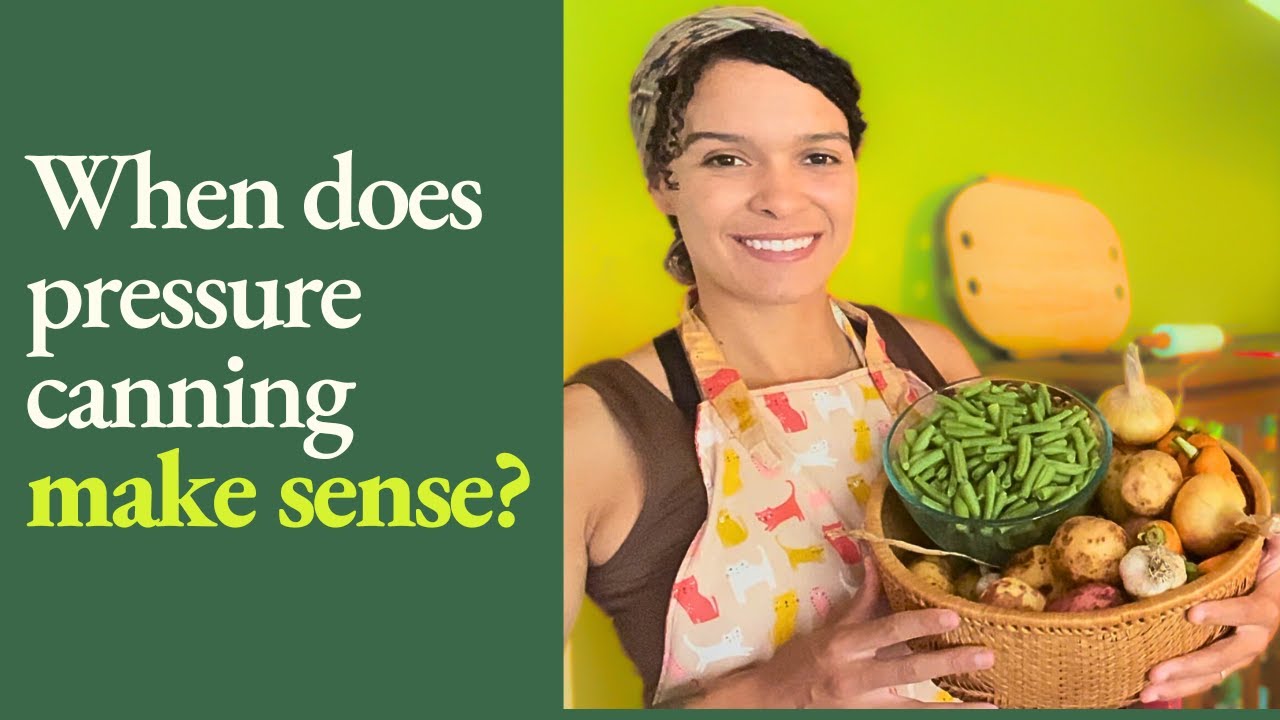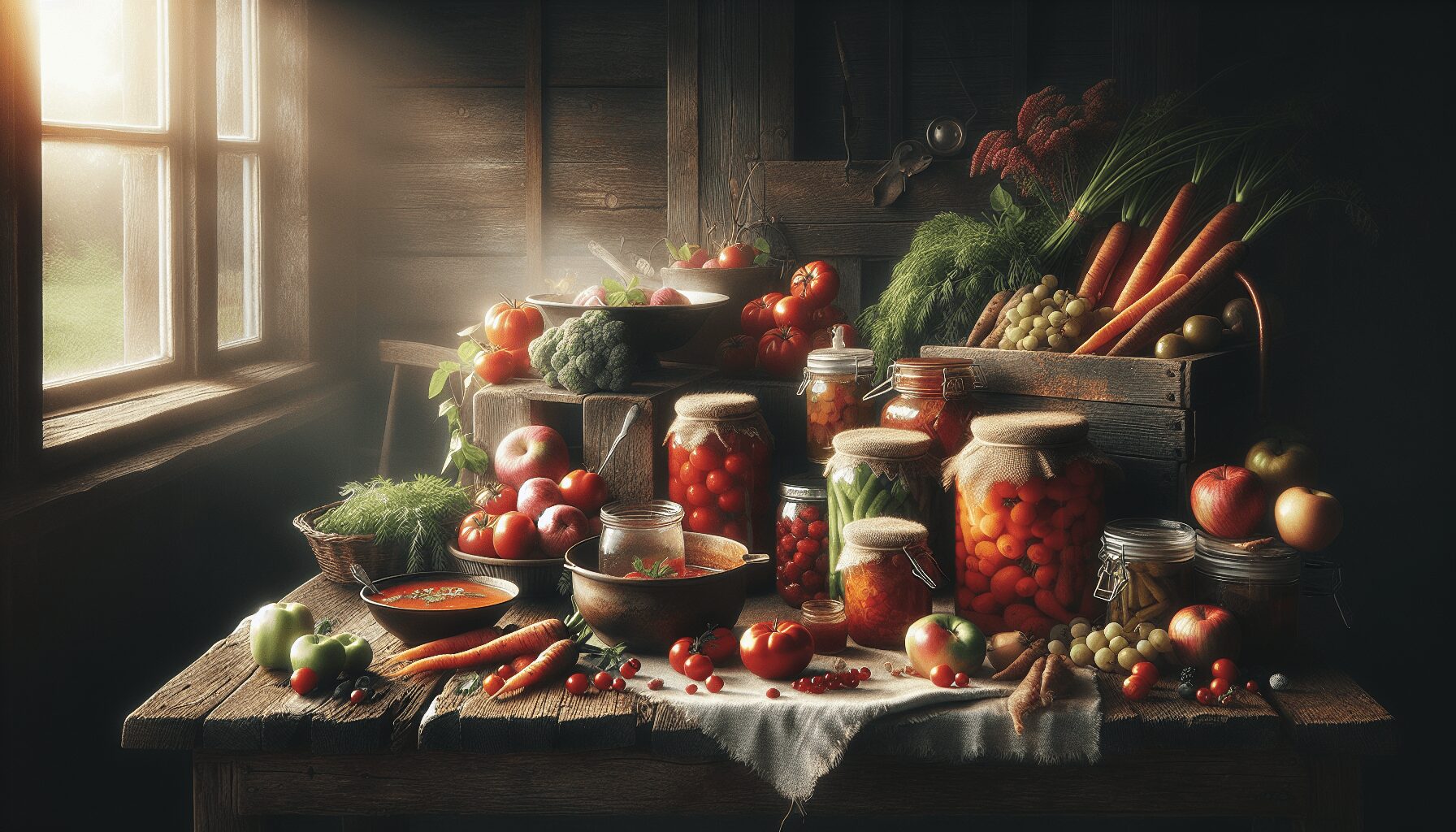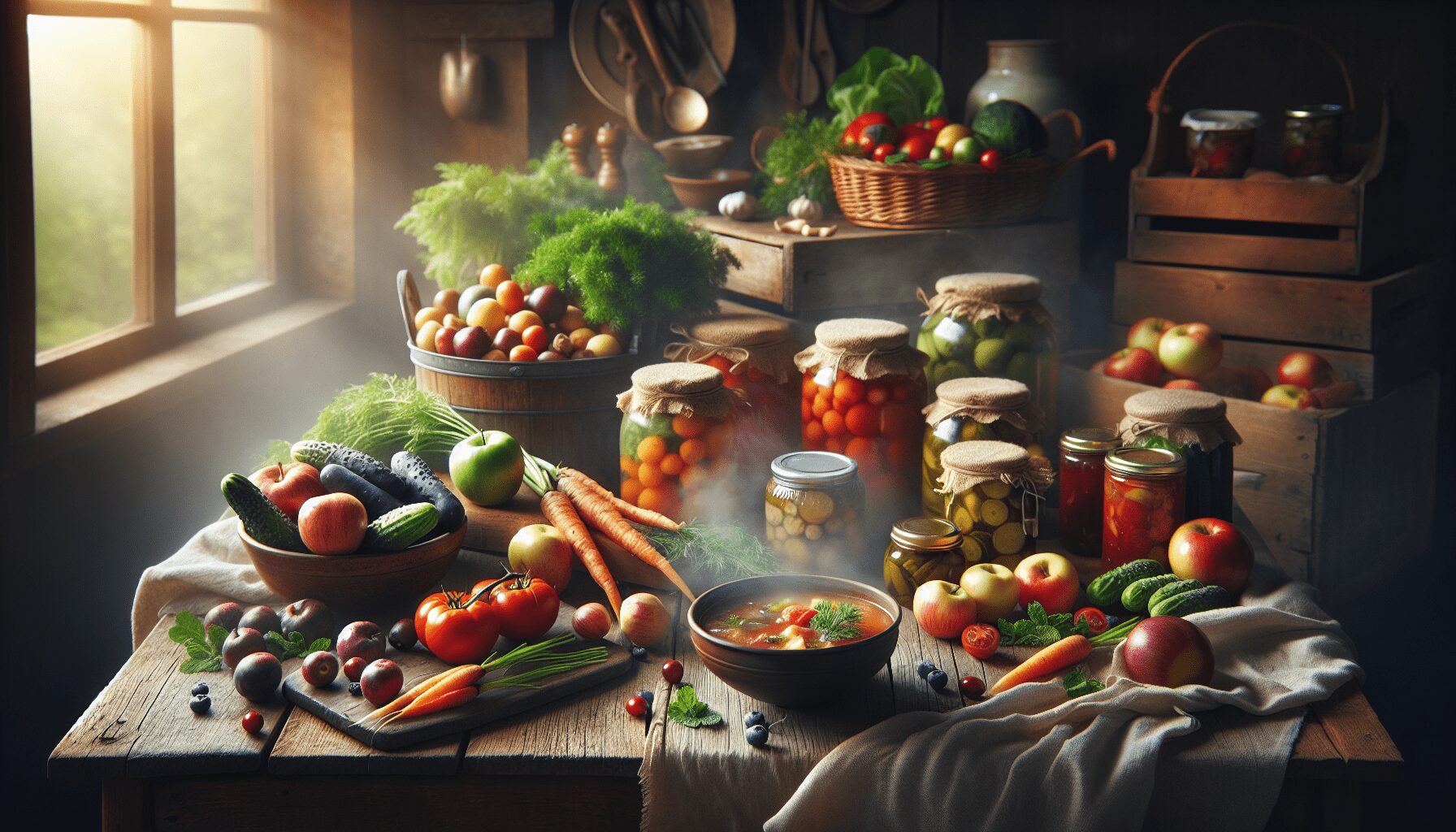You’re in for a treat with today’s homestead vlog, focusing on food preservation and whipping up a soul-soothing vegetable soup. This year marked a milestone – for the first time, our garden harvest was abundant enough to make pressure canning a worthwhile endeavor. From sweet carrots to robust green beans, we’ll walk through the meticulous steps of harvesting, prepping, and canning, while sharing some real talk about the challenges and triumphs of this season’s bounty.
Learn how keeping your kitchen cleaner by processing veggies outside can make a world of difference, and discover why freezing isn’t always the most reliable option due to frequent power outages. And let’s not forget the delicious vegetable soup prepared in chicken broth, perfect for when you’re feeling under the weather or simply too busy to cook. This journey isn’t just about mastering pressure canning but also embracing the evolving process of becoming more self-sufficient one step at a time.
Harvesting and Preparation
Welcome to the homestead vlog focused on food preservation and vegetable soup preparation. This year, with an abundant garden harvest, pressure canning has finally become a worthwhile venture. Let’s dive into the essentials of harvesting and preparing your garden produce.
Timing and Picking Perfect Vegetables
Timing is everything when it comes to harvesting. You’ll want to pick your vegetables at their peak ripeness to ensure maximum flavor and nutrient value. For instance, carrots are best harvested after a light frost, which enhances their sweetness. Keep an eye out for blemish-free vegetables, as these are generally the healthiest and most suitable for canning.
Washing and Readiness of Vegetables
Once harvested, give your veggies a good wash. Start by rinsing them outside to remove most of the dirt. Our clothes washing station doubles up as a vegetable washing station! A vegetable scrubber can help get the last of the dirt off before bringing them inside. Clean vegetables are essential for not just canning but also for keeping your kitchen tidy and ready for the next steps.
Prepping Ahead for Smoother Canning
Prepping ahead can change the entire game. Since pressure canning requires your full attention, having everything sorted and ready can make the process smoother. Harvesting, washing, and chopping your vegetables a day before can reduce the time spent canning from half a day to just a couple of hours. This prep work ensures you can focus entirely on making sure each step of the canning process is flawless.
Successful Carrot Varieties
Let’s talk about the successful carrot varieties we’ve grown this year.
Danvers: The Top Performer
Danvers carrots have been the top performer in our garden. These carrots are typically longer and offer a sweet and robust flavor, especially after a light frost. They have been pest-resistant and are perfect for both fresh eating and canning.
Short and Sweet: Living Up to Its Name
Short and Sweet carrots do exactly as their name suggests. They are smaller but pack a punch in the sweetness department. These little guys are perfect for those who prefer manageable bite-sized pieces in their meals.

This image is property of i.ytimg.com.
The Pressure Canning Process
Moving on to the heart of our food preservation strategy – the pressure canning process.
The Essential Equipment Needed
You can’t underestimate the importance of having the right equipment. Essential items include a pressure canner, canning jars, lids and rings, a jar lifter, a funnel, and a lid lifter. These tools ensure that your canning process is safe and efficient.
Why Pressure Canning Requires Focus and Planning
Pressure canning is a process that demands your full attention and careful planning. Because it involves high pressure and temperatures, you should avoid multitasking to minimize risks. Ensuring all your ingredients and equipment are properly prepared ahead of time allows you to dedicate your focus to the canning process itself.
Steps for a Flawless Pressure Canning Session
- Prepare Your Jars: Sterilize your jars and let them sit in hot water until ready to use.
- Prepare Your Vegetables: Have your veggies cleaned, peeled, chopped, and ready.
- Fill the Jars: Using a funnel, fill your jars with the vegetables and broth, leaving appropriate headspace.
- Seal the Jars: Wipe the rims clean, place the lids on, and screw the rings to fingertip-tight.
- Process in Canner: Place the jars in the canner, follow the manufacturer’s instructions, and process for the required time.
- Cool and Store: Allow the jars to cool completely before checking the seals, and then store them in a cool, dark place.
Food Processing Venue Tips
Where you process your food can make a big difference.
Advantages of Outdoor Vegetable Processing
Preparing vegetables outside can keep your kitchen cleaner and less cluttered. There’s less worry about dirt getting everywhere, and you can enjoy the fresh air while you work.
Keeping the Kitchen Spotless
After outdoor prep, keeping your kitchen spotless becomes easier. It allows you to focus solely on the canning process without worrying about additional messes. Clean workspace equals stress-free canning!

Decision Making in Food Preservation
Deciding how to preserve your food is crucial for efficiency and effectiveness.
When to Eat Fresh
Freshly harvested vegetables should be eaten as they ripen for the best flavor and nutritional value. Some vegetables are best enjoyed fresh and don’t fare well with preservation methods.
What to Refrigerate or Freeze
Refrigerate or freeze items that you will use in the near term but can’t consume immediately. This includes surplus produce that doesn’t quite fill a canner or isn’t enough to warrant a full canning session.
Best Practices for Effective Canning
Effective canning involves understanding when to move from fresh eating to preservation. For larger harvests, pressure canning, water bath canning, or dehydrating makes sense. Always use tested recipes and follow them precisely to ensure safety.
Challenges with Freezing Food
Freezing food isn’t without its challenges.
Impact of Frequent Power Outages
Frequent power outages can jeopardize your frozen food supply. If you live in an area prone to outages, consider this risk. A sudden loss of power could spoil your supply, which can be disheartening after all your hard work.
Reliability Issues and Alternatives
Given the reliability issues with freezing due to power outages, look at alternatives like pressure canning or dehydrating. These methods can ensure your food remains preserved and ready for consumption without relying on continuous electricity.

Making Vegetable Soup from Garden Produce
A warm bowl of vegetable soup can be a lifesaver, especially when you’re feeling under the weather or pressed for time.
Essential Veggies and Chicken Broth Combo
Using a variety of garden vegetables like carrots, onions, potatoes, and green beans, combined with homemade chicken broth, creates a nutrient-dense, delicious soup. The broth can be made by boiling a chicken carcass, which uses parts of your food that might otherwise go to waste.
Planning Soup for Sick or Busy Days
Being prepared for those days when you can’t muster the energy to cook is invaluable. Having canned soup on hand ensures that even when you’re not up for cooking, you’re still eating something healthy and fulfilling.
Learning and Adaptation in Homesteading
Homesteading involves continuous learning and adaptation.
Pressure Canning Experience and Growth
Every canning session adds to your experience and knowledge. Starting with low-risk, high-acid foods like sauerkraut can help build your confidence. As you become more comfortable, you can move on to more complex items like mixed vegetables.
Debunking Homesteading Ease Myths
Homesteading is often romanticized, but it comes with its set of challenges. It’s important to acknowledge your unique circumstances and the resources at your disposal. Know that your efforts are valid and valuable, even if they don’t look like someone else’s.
Personal Circumstances Impacting Focus
Your personal circumstances—whether you have a flexible job, no small children, or minimal outside responsibilities—can greatly impact your ability to focus on homesteading. Appreciate your own journey without comparing it to others.
Optimizing Resource Use
Maximizing what you have helps in making the most of your homesteading efforts.
Rast Chicken Carcass for Broth
Using a chicken carcass to make broth ensures that no part of the animal goes to waste. This broth is not only flavorful but also packed with nutrients, making it a great base for soups and stews.
Utilizing Less Ideal Vegetables
Less ideal vegetables, such as those with blemishes or minor imperfections, can be used in soups or broths. This minimizes waste and maximizes the utility of your garden produce.
Portion Control and Food Planning
Practicing portion control helps you understand how much food you really need. This becomes especially important in planning your canning sessions. You can then make accurate recipes that meet your needs without waste.
Conclusion
Recap of Food Preservation Strategies
From harvesting and prepping to pressure canning and using every part of your produce, there are many strategies to ensure your garden’s bounty lasts beyond the growing season.
Embracing Continuous Learning and Adaptation
Remember, homesteading is a continuous journey of learning and adapting. Celebrate your successes, learn from your challenges, and most importantly, enjoy the process. Happy harvest and see you in the next vlog!